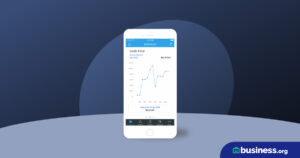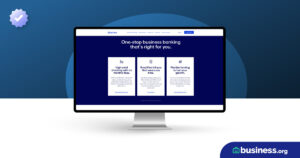💸 See if your business qualifies for a tax credit worth up to $26k per employee. 📞 Call Now: 855-979-9597
How to Calculate Dividend Yield
We are committed to sharing unbiased reviews. Some of the links on our site are from our partners who compensate us. Read our editorial guidelines and advertising disclosure.
A dividend yield is the money a company pays out to its shareholders divided by the company's current cost per share of stock. The dividend yield formula shows potential investors whether they stand to turn a profit on an investment based on current stock prices, which fluctuate during the year.
A dividend yield ratio is usually written as a percentage. When calculating your expected dividend yield, use this formula:
Dividend yield = (annual dividends / current stock price) x 100
Dividend yield definition
Before we break down the dividend yield formula, let's establish what we mean by dividend.
A dividend is the amount of money a company pays out to its shareholders. This money comes from the company's profit. Typically, any money left over after the stakeholders are paid gets reinvested in the business—think research and development or a bigger marketing budget.
A company's dividend yield, then, is a financial ratio that shows investors whether they stand to make a return on investment if they buy stock in a company right now. And yes, that emphasis on now is crucial: the costs of shares change constantly, often multiple times a day. So while a dividend yield can give you an estimate of how much you'll gain if you invest immediately, an estimate is all it will give you.
A company's dividend yield ratio is that rate of return investors can expect to gain per share of stock purchased. In contrast, the dividend payout ratio shows you how much a company is paying out in dividends compared to how much it's reinvesting. A company that pays out too much instead of reinvesting isn't focusing on growth, while a company that reinvests everything without paying shareholders isn't focusing on attracting additional investors.
Dividend yield example
Okay, let's imagine you want to invest in a popular tech company with a current stock share price of $100. Let's also say the company pays out $10 per share per year. In this scenario, your dividend yield formula would look like this:
Dividend yield = (10 / 100) x 100
Dividend yield = 10%
Ten percent is a pretty high ratio—in fact, it might be too high. If companies pay out more than they reinvest, they might not be putting themselves in a position to grow over the next year. So what's a good dividend yield ratio if you're on the hunt for a new investment? Most companies in the U.S. News & World Report list of 2020's best dividend stocks have a dividend yield ratio between 2% and 7%, with just one company hitting the 15% dividend rate.1 If you find a company with a dividend yield ratio around 4%, you're looking in the right place.
By signing up I agree to the Terms of Use and Privacy Policy.
Dividend yield FAQ
What is a financial ratio?
Financial ratios are helpful metrics that investors, businesses, and shareholders use to evaluate a company's financial health. Ratios are usually expressed in percentage form.
But remember, you need to do more than calculate the ratio—you need to interpret the ratio too. For instance, you might run the dividend yield formula and find that a company's average dividend yield is 12%. While the number looks high on paper, analyzing its context and crunching other numbers like your return on investment can clarify how good (or bad) this investment opportunity really is.
What is an annualized yield?
Some companies pay dividends to their shareholders on a monthly or quarterly basis. However, the dividend yield formula typically requires you to divide a company's annual dividends by its current stock price. So to calculate the right number for the formula, you need to annualize the company's dividends.
For instance, if the company pays shareholders monthly, you'll multiply that number by 12 to get the annualized dividend. And if the company pays shareholders quarterly, you'll multiply that number by four.
What's the difference between forward and trailing dividend yields?
A forward dividend yield is a company's projected dividend yield. To estimate how much a company is expected to pay out in dividends, you'll calculate the company's annualized dividend based on its most recent dividend payments. Then you'll use the dividend yield formula (annualized dividend divided by current stock price) to calculate the forward dividend yield.
A trailing dividend yield is just the opposite: it represents what the company did pay out in dividends over the past 12 months. If you hope to invest in a specific business, its trailing dividend yield shows you exactly how much prior investors did receive in dividends over the last year. If stock prices stay the same—and remember, that's a big if—you can generally assume to be paid a similar dividend. On the other hand, a forward dividend is just an estimate of what dividends could look like down the road.
Both types of dividend yields assume the price of stock will stay constant, but as any stockbroker knows, the stock market's main constant is its inconsistency. While you should definitely calculate both the forward and trailing dividend yield, remember that you're only getting an estimate, not a guaranteed payout.
Do all companies pay dividends?
No, not all companies pay dividends. In fact, many don't, especially new companies. At the outset, many business owners choose to reinvest as many of their profits as they can so they can grow their business. Paying out shareholders in cash at the end of a year or quarter is more affordable for bigger, established companies, though newer companies wanting to attract investors might issue dividend-paying stocks.
Want to find out which companies do pay shareholder dividends? You can check financial publications like the Wall Street Journal's Dividends page or the Security and Exchange Commission's investment search on investor.gov to find some starting points.
The takeaway
For better or worse, there's no way to be certain that an investment will pay off, but you can collect as much info as possible about an investment before you make it. Now that you know how to calculate dividend yield, you can up your chances of making a good investment choice that leads to a good return.
Want to learn about other financial ratios that can help guide your investment choices? Head over to our article on the return on investment formula.
Disclaimer
At Business.org, our research is meant to offer general product and service recommendations. We don't guarantee that our suggestions will work best for each individual or business, so consider your unique needs when choosing products and services.
1. John Divine, U.S. News & World Report, "15 of the Best Dividend Stocks to Buy in 2020," June 24, 2020. Accessed October 13, 2020.





